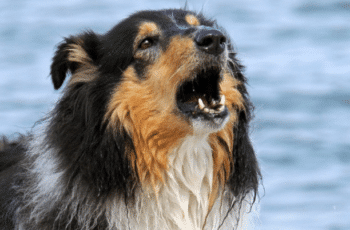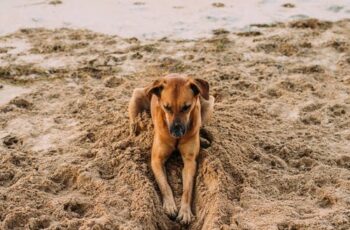https://youtu.be/K2akigcFWVs
Separation anxiety in dogs is defined as any excessive or persistent response to the absence of a loved one. It’s a normal and natural occurrence for dogs attached to their owners, especially if they’re left alone for long periods of time.
Unfortunately, separation anxiety can also be caused by less than ideal living situations, fear, anxiety, and over-excitement. If you notice any signs listed here that your dog may be suffering from separation anxiety, discuss this with your veterinarian as well as other professionals in the pet industry or animal behaviorists.
Here is the list of symptoms that may indicate your dog may be experiencing separation anxiety.
15 Common Symptoms of Separation Anxiety
1. Urinating and Defecating
It is normal for dogs to relieve themselves when they are confined at home. However, you should pay attention to the frequency of urination and defecation. If a dog defecates inside the house more than once in an hour, he may be suffering from separation anxiety.
2. Licking and Chewing
If a dog licks or chews on some of the objects inside his house, he might be suffering from separation anxiety because he has not gone through enough exercise in a day.
3. Barking and Howling
A dog experiencing separation anxiety might be noisy. He may bark and howl even when he is alone.
4. Anxiety and Aggression
He might show aggression to other pets or people around him because of his anxiety during separation. This can be dangerous, especially if he gets into the habit of showing aggressive behavior during his stay at home alone.
5. Urine Tracking
If you notice your dog urinating in one area of his house more than once, he might be suffering from separation anxiety.
6. Pacing and Panting
A dog that is anxious to experience separation may pace up and down the house. He might also pant too much even when there is no heat inside the home.
7. No Playfulness or Moodiness
A dog suffering from separation anxiety may not play with other dogs, especially when they are left alone at home. He might also ignore other pets in the home and prefer to be alone.
8. Excessive Sleeping
A dog that has suffered from separation anxiety will spend a lot of time sleeping even when there is sufficient exercise for him outside the house. He might also cry or whine for a long time before he goes to sleep.
9. Dehydration
A dog experiencing separation anxiety might not drink enough water. This can result in dehydration which can make him shaky and agitated. A dog must drink enough water during his stay at home alone.
10. Escaping from Cage
Dogs suffering from separation anxiety might chew through the cage while they are left alone at home. This could lead to escape attempts and accidents.
11. Urine Marking
A dog suffering from separation anxiety may leave his urine smells on various objects inside the house or papers used for target training.
12. Digging and Destructive Behavior
Some dogs suffering from separation anxiety will show destructive behavior, especially if they are left alone in the house. They may start digging holes, gnawing on things, constantly bark, incessant pacing, or going to the door repeatedly to see if someone is coming home.
13. A constant state of alertness
A constant state of alertness in the absence of their owner or other persons with whom they are accustomed to spending time together.
14. Displays of anxiety and fear
Drooling, pawing at the ground, pacing back and forth; feelings of emptiness and loneliness when not in the presence of their owners.
15. Whining or crying
Often a dog with separation anxiety will begin to cry and pace at inopportune moments when they feel alone or when their owners are not around.
In Summary
It is important to know the different signs and symptoms of anxiety so that you can act quickly to prevent any stress or distress from your dog. No matter what is causing the symptoms listed above, finding help and support for your dog is crucial.
Separation anxiety can develop when a dog has been left alone for long periods. This can be as little as ten minutes to as long as several hours. The longer your dog is left alone, the more likely they are to display signs of anxiety or panic.
If you observe a number of the symptoms that we have just gone over. It’s a good idea to call your veterinarian or veterinary emergency service for assistance. It is best if you can take your dog to the veterinary office as soon as possible after these signs appear so that he can receive immediate medical attention and appropriate treatment.


